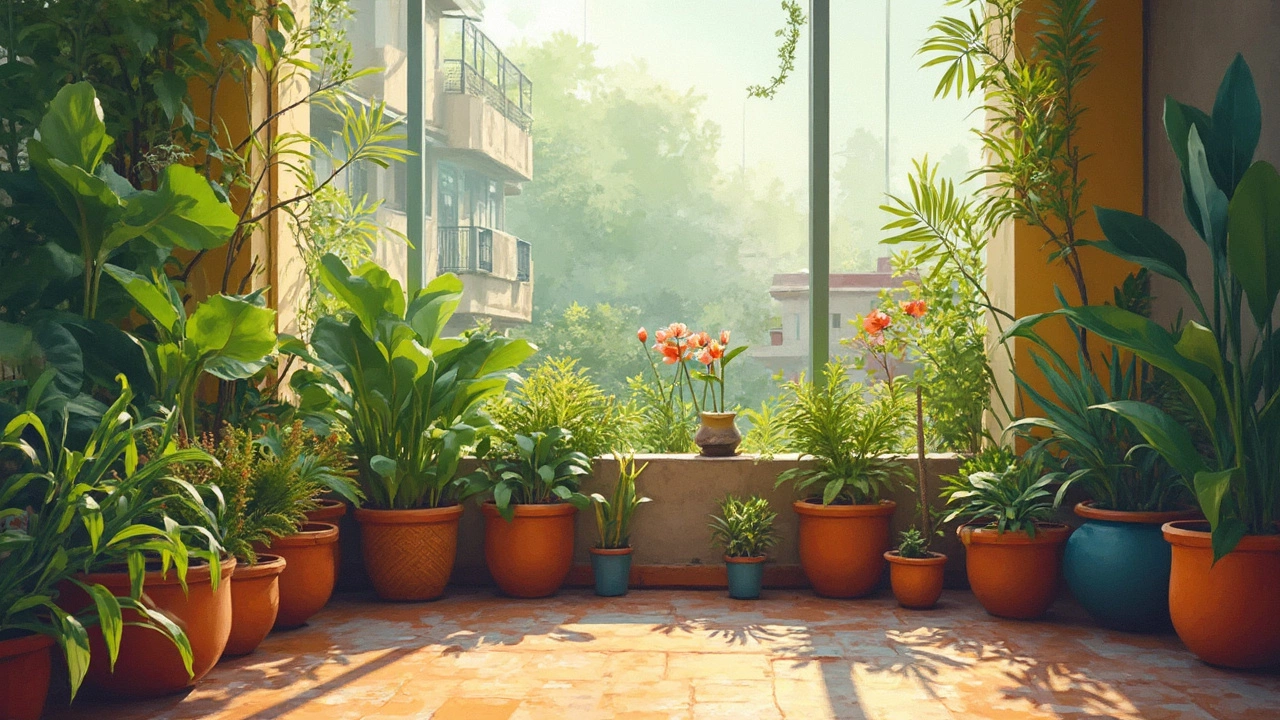Arranging plants on a balcony isn't just about aesthetics—it's about making the most of limited space. With strategic placement, you can create a lush oasis even in a small urban setting. Understanding sunlight, plant type, and personal preference is key to maximizing greenery. This guide will walk you through choosing the right plants and positioning them for best growth.
Outdoor Garden Tips for Indian Homes: Soil, Plants, and Practical Care
When you think of an outdoor garden, a living space outside your home where plants grow naturally under the open sky. Also known as a yard garden, it’s more than just flowers—it’s where food, beauty, and nature come together in your own backyard. In India, an outdoor garden isn’t just a luxury; it’s a daily connection to the land. Whether you have a full yard, a rooftop, or just a balcony, the principles are the same: healthy soil, the right plants, and smart watering make all the difference.
One of the biggest mistakes people make is ignoring the soil. Dense, clay-heavy soil won’t let roots breathe or water drain properly. That’s why adding compost, broken-down organic matter that feeds plants and loosens heavy soil, or perlite, a lightweight volcanic rock that improves drainage turns hard ground into something plants actually love. You don’t need fancy products—kitchen scraps, dry leaves, and even crushed eggshells can build rich soil over time. And if you’re using containers, make sure they’re deep enough. A tiny pot won’t support a hydrangea, no matter how much you water it.
Choosing the right plants is just as important. India’s climate varies wildly—from scorching summers to heavy monsoons—so you need species that can handle it. Plants like jasmine, a fragrant, low-maintenance flowering vine common across Indian homes, or marigold, a bright, hardy bloom that thrives in heat and repels pests, will keep your garden colorful year-round. Forget tropical plants that need constant humidity; focus on natives that have evolved here. They need less care, use less water, and attract local bees and butterflies.
Watering is another area where most gardens fail. Drip irrigation isn’t just for farms—it’s perfect for home gardens too. But if your drip emitters, small devices that release water slowly at the base of plants are clogged or leaking, your plants suffer. A simple rinse or flush can fix most issues. And never water in the middle of the day—early morning is best. It cuts down on evaporation and gives roots time to drink before the sun hits hard.
Outdoor gardens in India aren’t about perfection. They’re about persistence. A good gardener doesn’t have a green thumb—they have patience, observation, and the willingness to learn from what the plants tell them. If your zinnias are getting eaten, rabbits might be the culprit. If your soil stays wet for days, you need better drainage. If your plants look tired even with plenty of sun, maybe they’re getting too much heat bounce off a concrete wall. The answers are in the details.
Below, you’ll find real, tested advice from gardeners who’ve dealt with India’s unique challenges. From choosing the best balcony orientation to fixing broken drip lines, these guides cut through the noise. No fluff. No theory. Just what works—right now, in your garden, in your city, in your season.
